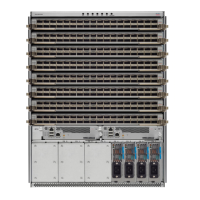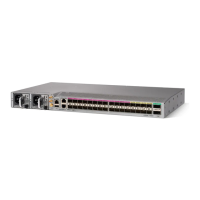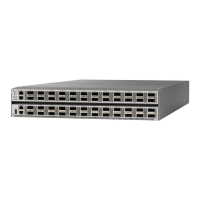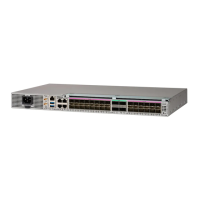PurposeCommand or Action
Enters FSPF global configuration mode for the
specified VSAN.
fspf config vsan vsan-id
Example:
switch(config)# fspf config vsan
14
Step 2
User needs to configure the VSAN on which
FSPF is being configured.
Note
Forces static SPF computation for the dynamic (default)
incremental VSAN.
spf static
Example:
switch-config-(fspf-config)# spf
static
Step 3
Configures the hold time between two route
computations in milliseconds (msec) for the entire
VSAN. The default value is 0.
spf hold-time value
Example:
switch-config-(fspf-config)# spf
hold-time 10
Step 4
If the specified time is shorter, the routing is
faster. However, the processor consumption
increases accordingly.
Note
Configures the autonomous region for this VSAN and
specifies the region ID.
region region-id
Example:
switch-config-(fspf-config)#
region 1
Step 5
Resetting FSPF to the Default Configuration
You can return the FSPF VSAN global configuration to its factory default.
Procedure
PurposeCommand or Action
Enters global configuration mode.configure terminal
Example:
switch# configure terminal
switch(config)#
Step 1
Deletes the FSPF configuration for the
specified VSAN.
no fspf config vsan vsan-id
Example:
switch(config)# no fspf config vsan 24
Step 2
Enabling or Disabling FSPF
You can enable or disable FSPF routing protocols.
Cisco Nexus 5500 Series NX-OS SAN Switching Configuration Guide, Release 7.x
OL-30895-01 171
Configuring Fibre Channel Routing Services and Protocols
FSPF Global Configuration

